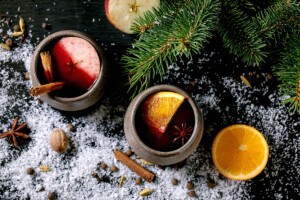What You Missed at the SCAA Coffee Expo
This year marked the 25th year of the Specialty Coffee Association of America’s Specialty Coffee Exposition, an accomplishment that was reflected in the breadth of speakers, panels, competitions, and vendors on site at the Boston Convention and Exhibit Center earlier this month (the event travels from year to year, and it’s pretty major that they chose Boston for their 25th event). Held over four days, the brunt of the exposition’s events took on April 12 and 13. Read on to find out what’s happening in the coffee world right now, and what trends you should be looking for in the coming months.
People take their iced coffee very, very seriously.
A controversial drink in the caffeinated world, iced coffee took center stage at Saturday morning’s “Iced Coffee: Passion, Science, and Implementation of Various Brew Methods” lecture. The lecture focused narrowly on the technical logistics that go behind a coffee shop integrating the iced variety: the additional costs, new standards that must be considered, and various brew methods. Practices like leftover drip—a convenient way for larger chains to dispose of leftover coffee that often results in a noticeable bitterness—were criticized, with those in attendance favoring the Japanese-iced method (heat-soluble extraction) and the iced-Americano, a blend of espresso and ice water (which, as a result, carries a distinct espresso flavor).
The batch brew vs. pour-over debate rages on.
The most highly attended of the Saturday morning lectures—“we were expecting maybe 20 people,” the panelists admitted sheepishly—was “Man vs. Machine: The Pour-Over vs. Batch Brew Debate,” which featured much less head butting than expected. Led by Brant Curtis, marketing manager of Curtis, and Trevor Corlett, CEO and cofounder of Madcap Coffee Company (both, above), the discussion touched upon issues that included the speed of service as well as the cost, bar-flow, quality and consistency, control, and volume adaptability of each method. At the end of the talk, no clear-cut conclusion had been achieved. When Curtis mentioned that batch produced coffee much quicker, Corlett responded, “why are you in such a hurry?”
Some big-chains are throwing their hats in the batch/pour war.
Corlett mentioned some intensive taste testing he’d performed in L.A. before opening his own coffee shop, indirectly citing Starbucks—“the jolly green giant”—as his experimenting ground. Purchasing 2 cups of coffee at non-peak (read: no lines) times, he waited eight minutes each time. “You should go somewhere else,” quipped Curtis. Citing a study of his own shop, a pour-over haven, Corlett promised wait-times of no more than three minutes without a line, and between five and seven with a line. Something many people may not know, however, is that Starbucks itself alternates between batch and pour-over brewing methods. “It does manual [pour-over] brew for decaf,” the panelists agreed, “and for some afternoon offerings. It’s all about the dollars and cents.”
Coffee consistency is modeled after Disney.
Much like the Walt Disney Corporation trains its employees to offer a consistent experience, Corlett and Curtis argued about two similar sides of the same coin in terms of consistency. After discussing factors like the return on investment (ROI) and workflow, the topic of conversation turned to the flavor and temperature consistency. Curtis argued that when he visits a coffee shop, he expects the “stuff to be all on the same level,” promising that batch-brew ensured said reliability. “The problem there,” raised Corlett, “is that not everybody wants the same flavor each time they drink coffee.” After his co-panelist claimed his response was a copout, Corlett assured attendees that “my customers become dependent upon the experience with us, not the actual taste.” Whether discussing experience or taste, both men seemed to agree that some form of consistency was key in each method.
Modernism is the flavor of the month.
At this year’s US Barista Championship, contestants like Travis Beckett and Charlie Habegger emphasized a more modern spin on classic drinks during their carefully timed 15-minute showcases. Drinks like blended espresso and soda made with nitrous oxide were presented to the judges, all of whom were told to search for things like “fruity and acidic flavors,” “a hint of blackberry,” and in the case of Beckett’s nitrous-soda, “bubbles that mimic the effect of classic espresso.”
Sometimes, simplicity wins out.
Meanwhile, at the Brewer’s Cup, coffeemakers from around the country demonstrated just how tricky it is to brew the perfect cup of hand-crafted coffee without any additional syrups, foams, or tricks. Commenting on his choice of bean, later-champion Erin McCarthy (of New York’s Counter Culture Coffee) described the variety geisha as “the Meryl Streep of coffee. It has a history of excellence that sets up expectations for us.”
For more online food coverage, find us on Twitter at @ChowderBoston



